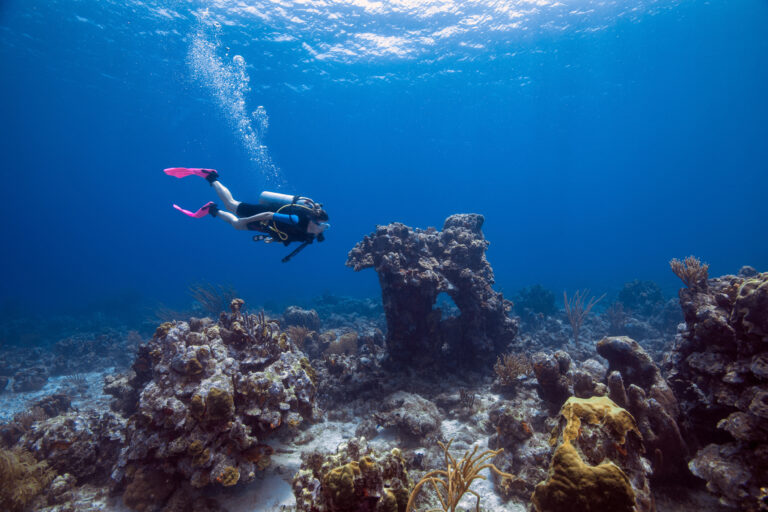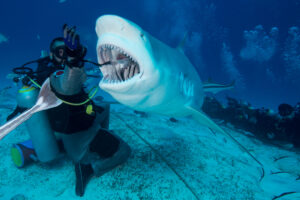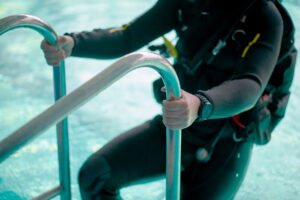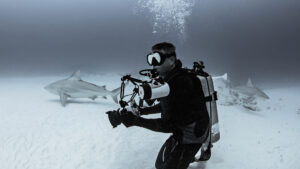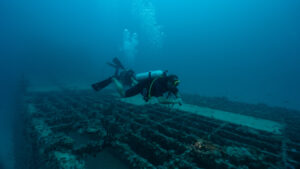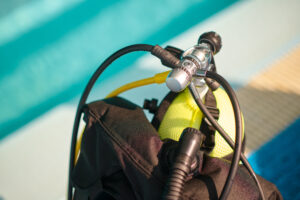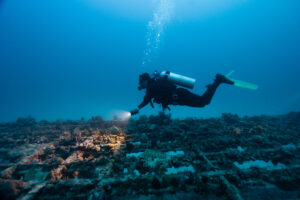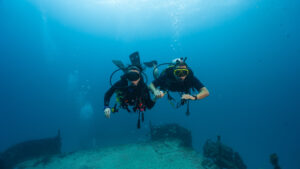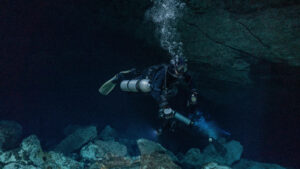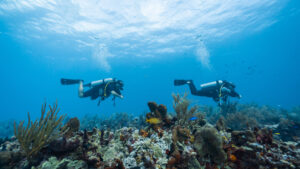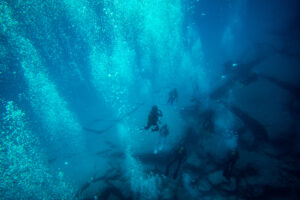What is a Recreational Dive Planner (RDP)?
The Recreational Dive Planner (RDP) is a decompression table developed by the Diving Science and Technology Corporation (DSAT) to facilitate safe and efficient planning of no-stop recreational scuba dives. DSAT, an affiliate of the Professional Association of Diving Instructors (PADI), is dedicated to the advancement of diving safety and education. The RDP, designed to manage the risks of decompression sickness, helps divers calculate their no-stop time – the amount of time they can spend underwater without requiring a decompression stop during ascent.
Background
Decompression sickness (DCS), also known as “the bends,” is a potentially life-threatening condition caused by the formation of nitrogen bubbles in the body’s tissues and bloodstream due to changes in pressure during a dive. To minimize the risk of DCS, divers must manage their nitrogen absorption by adhering to safe depth and time limits, as well as ascending slowly and performing safety stops when necessary.
The RDP is a vital tool that simplifies this process, providing divers with an easy-to-understand system for calculating no-stop limits, which are based on research and extensive dive data. It is widely recognized and accepted in the recreational diving community.
Using the RDP
The RDP is available in various formats, including a paper table, a wheel, and digital versions integrated into dive computers. The RDP is designed to be used before and after dives to plan dive profiles, determine surface intervals, and track residual nitrogen. The RDP uses three main components to calculate no-stop times:
- Depth: Divers must first determine their planned maximum depth for the dive. The RDP provides depth increments in feet and meters, ranging from 35 to 130 feet (10 to 40 meters).
- Bottom Time: Bottom time refers to the total time spent at depth during the dive. The RDP displays no-stop limits for each depth, indicating the maximum bottom time allowed without requiring a decompression stop.
- Surface Interval: The surface interval is the time spent on the surface between dives, allowing the body to off-gas accumulated nitrogen. The RDP features a surface interval credit table that helps divers calculate their residual nitrogen and adjust their no-stop limits accordingly for subsequent dives.
Dive Planning with the RDP
To effectively use the RDP, divers should follow these steps:
- Determine the planned maximum depth for the dive.
- Locate the corresponding no-stop limit for the chosen depth in the RDP.
- Plan the dive to stay within the no-stop limit, taking into account factors such as air supply, dive objectives, and environmental conditions.
- After the dive, record the actual depth and bottom time.
- Use the surface interval credit table to determine the necessary surface interval before the next dive, adjusting the no-stop limits accordingly.
Limitations and Considerations
Although the RDP is a valuable tool, it is essential to recognize its limitations and consider additional factors when planning dives:
- The RDP is designed for no-stop recreational diving only and should not be used for decompression, technical, or mixed-gas diving.
- The RDP assumes a constant depth for the entire dive, which may not accurately represent a diver’s actual profile. Divers should plan conservatively and account for variations in depth.
- The RDP does not factor in individual susceptibility to DCS, which may vary due to factors such as age, fitness, and body composition. Divers should assess their personal risk factors and dive conservatively.
- The RDP is not a substitute for proper dive training and experience. Divers should receive appropriate instruction from a qualified professional before using the RDP.
Key Takeaways
The Recreational Dive Planner is a crucial tool for ensuring the safety and enjoyment of recreational scuba divers. By providing a straightforward method for calculating no-stop limits, the RDP empowers divers to manage their nitrogen absorption and reduce the risk of decompression sickness effectively. The RDP’s user-friendly design and wide acceptance within the diving community make it an indispensable resource for divers of all levels.
However, it is important to remember that the RDP is just one aspect of safe diving practices. Divers should also adhere to the following guidelines to further minimize risks:
- Maintain proper buoyancy control: Good buoyancy control not only conserves air and protects the environment but also helps divers maintain their planned depth and adhere to their dive profiles.
- Ascend slowly and perform safety stops: Even when staying within no-stop limits, divers should ascend slowly, no faster than 30 feet (9 meters) per minute, and perform a safety stop for at least 3-5 minutes at a depth of 15-20 feet (5-6 meters) to further reduce nitrogen off-gassing.
- Monitor air consumption: Regularly check air supply throughout the dive and have a clear plan for managing air reserves, including turning points and reserve limits.
- Dive within personal limits: Recognize personal skill levels, training, and experience, and plan dives accordingly. Avoid pushing boundaries, especially in challenging conditions or unfamiliar environments.
- Dive with a buddy: Always dive with a buddy and establish clear communication and emergency procedures before the dive.
- Stay informed and up-to-date: Regularly refresh dive skills and knowledge through continued education, refresher courses, and staying current with the latest safety guidelines and best practices.
The Recreational Dive Planner is a valuable asset for scuba divers, promoting safety and enjoyment in the underwater world. By combining the use of the RDP with proper training, adherence to safety guidelines, and good judgment, divers can confidently explore the depths while minimizing the risk of decompression sickness and other diving-related hazards.

